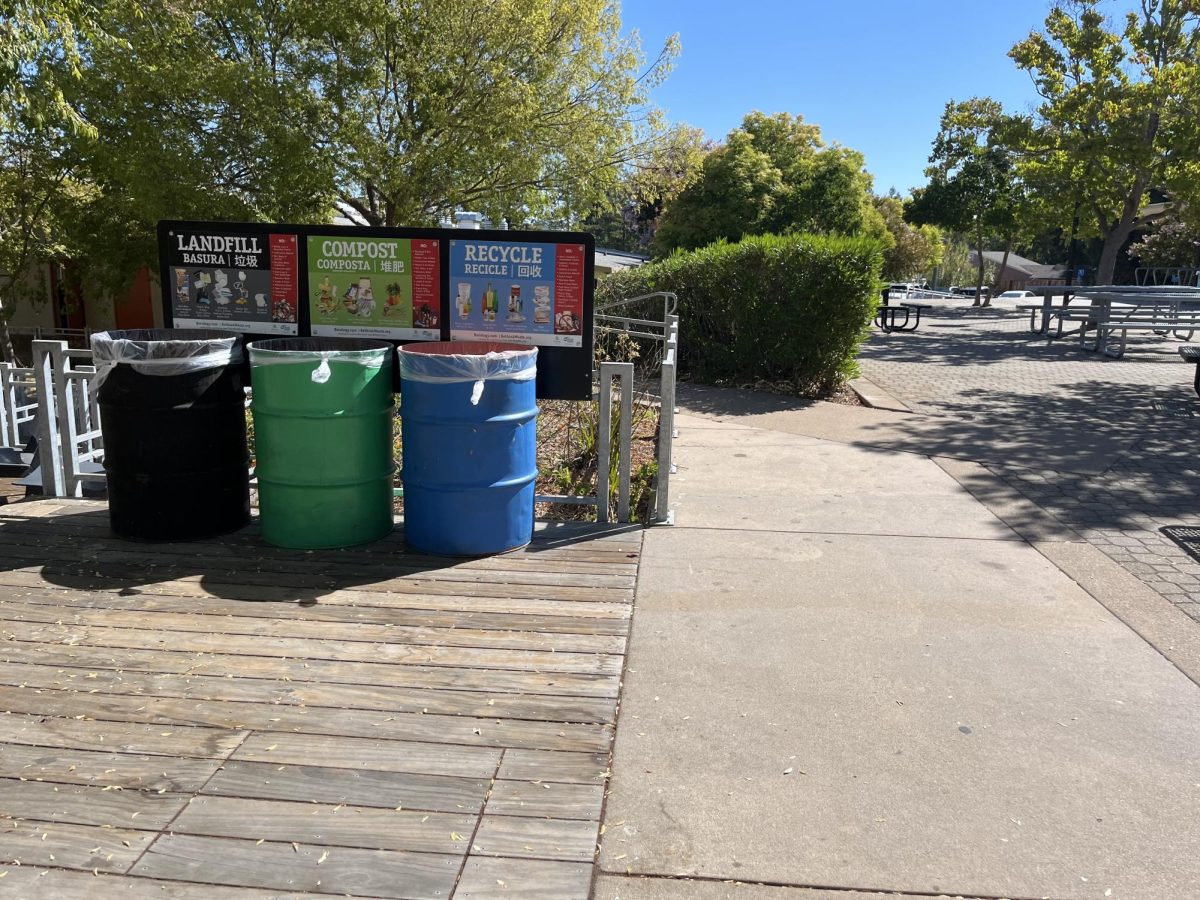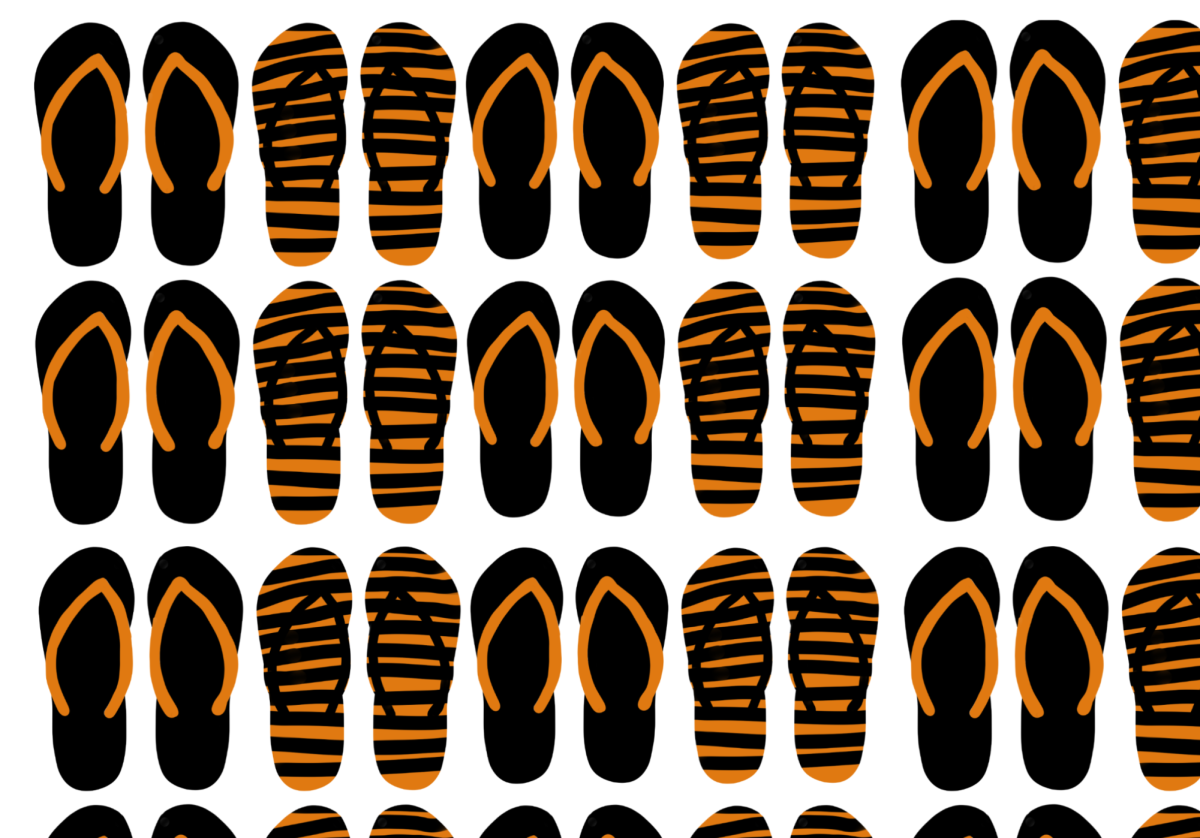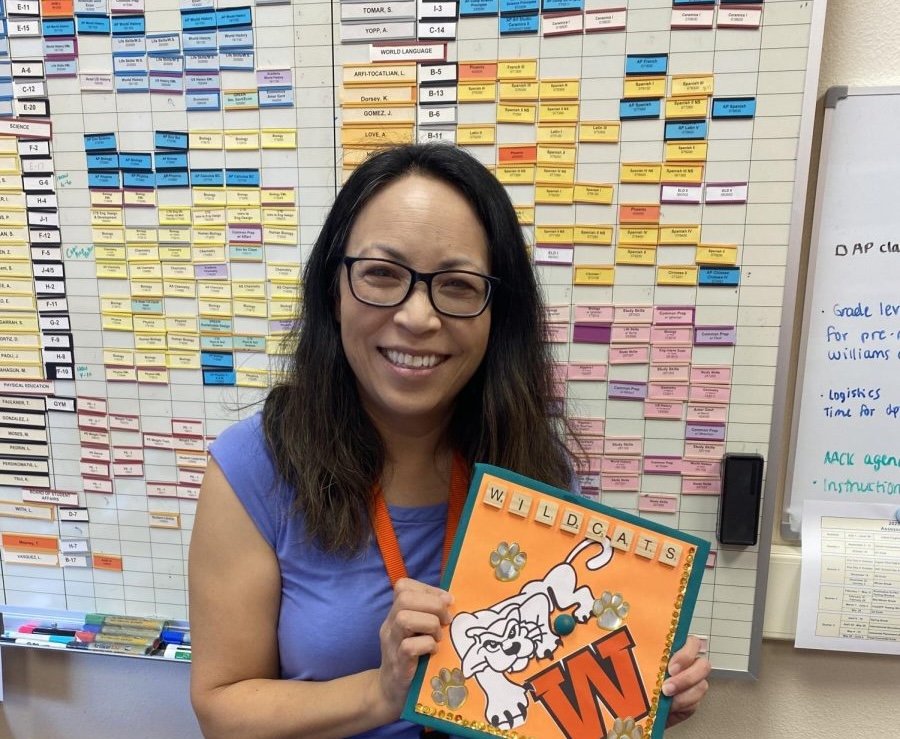Organizing trash is an extremely necessary and key practice that students at Woodside, and people at home, must participate in to help the environment, according to students and staff.
On Woodside’s campus, trash is separated into three categories: garbage, recycling and compost. This year, new signs were introduced in the quad and were placed above the trash cans to label trash cans and show examples of what goes into each bin.
“There was a complaint made that we were not doing enough at the school,” Advanced Placement (AP) Environmental Science teacher Ann Akey said. “The school and the school district responded by putting up better signage.”
Color-coded trash bins with signs were put up to help people on campus understand and differentiate where trash is meant to be organized.
“A lot of people have no idea where to put their trash,” junior and Sequoia High School District Sustainability Committee Member Alex Rene said. “So hopefully it’s a reminder when they’re at the trash can if they don’t know what to do with it.”
Many agree that signs are not always the most effective solution, but it does assist in fixing the problem.
“[There is] one of the major challenges that still remains,” science teacher Alton Lee said. “People are used to the [idea] of there [being only] one trash can, and [we] throw everything in there, so it’s not so much the signs themselves work [completely].”
Trash is brought to facilities and plants where they are converted to ash, gas or recycled for reuse. Mixing different materials can have a big impact on this process, while affecting the environment.
“Most of what we throw in the landfill here at Woodside High School could be composted,” Akey said. “If [landfill is composted or decomposed], it [creates] an anaerobic process, and it produces methane…[which] is a much more potent greenhouse gas.”
With lots of people on campus, Woodside generates lots of trash throughout the school year, which creates an even bigger threat to the climate. According to CalRecycle, schools and universities in California generate hundreds of thousands of trash a year.
“What we see is that if we throw everything into the landfill, there are some environmental consequences that you know that will occur,” Lee said. “Case in point, things that can be composted, if you put it in a landfill, basically it just rots [and does not return nutrients into the soil].”
Trash pollution has been a big problem for a very long time and the situation has been getting worse. Many reports of wildlife can be seen being affected by this problem.
“Improper waste management can lead to soil contamination, [air] pollution, or…water pollution,” Rene said. “If [trash] gets blown around [it can also cause wildlife harm].”
Akey shared that it’s important to take simple steps out of the day to look and make sure trash is going to the right place.
“Solving waste management is a piece of the larger puzzle,” Akey said. “Recycling is not going to save that by itself is not going to save the planet, but it’s a foolish thing not to do.”






